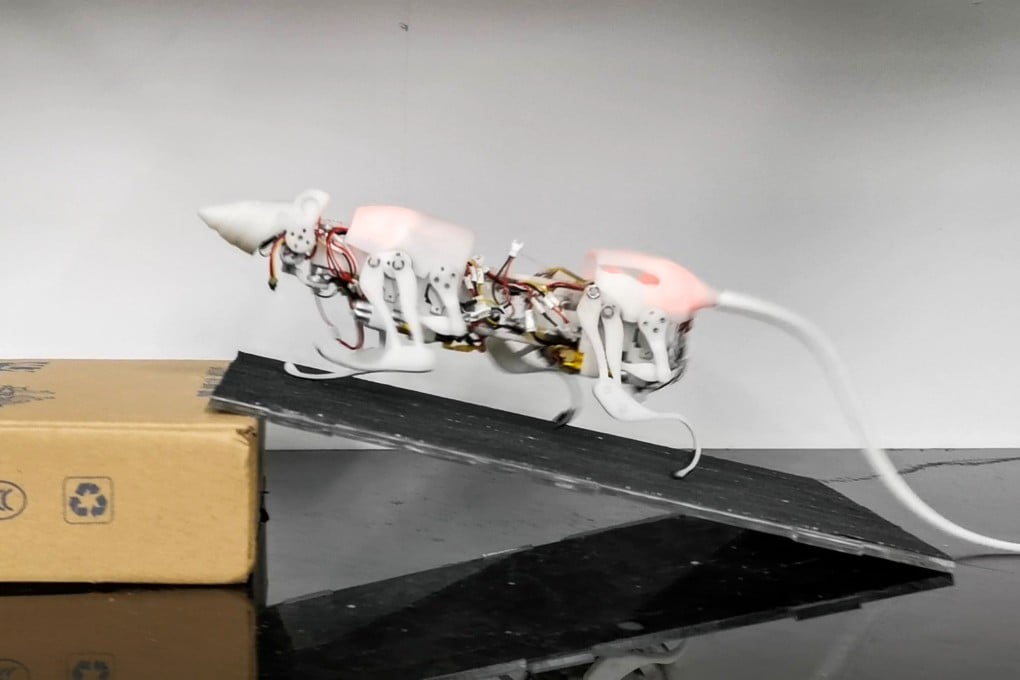Chinese scientists create robot rat and it could prove to be a lifesaver
- The mechanical rodent can squeeze through narrow spaces and climb over debris to deliver emergency supplies after an earthquake
- Its limbs and movements, including a tail to help it balance, were based on computer modelling of real-life rats

Chinese scientists said they have developed a robot rat that they hope can be used in post-disaster rescue missions.
They said the rat can squeeze through narrow spaces, climb slopes, get over obstacles and walk on snow, adding that it could be used to carry medical supplies or emergency rations to places rescuers cannot reach, for example to people trapped under rubble after an earthquake.
The team of researchers from the Beijing Institute of Technology and Tsinghua University published their findings in the peer-reviewed journal IEEE Transactions on Robotics this month.
Lead author Shi Qing, a professor and the vice-director of the intelligent robotics institute at the Beijing Institute of Technology, said the team has been upgrading the prototype since 2019 and hopes to get the robot ready for market launch in 2025.
“The robotic rat can be sent to earthquake ruins or building collapse scenes where debris forms spaces that are too narrow for rescuers to enter. It can deliver emergency rations to people trapped under rubble,” he said.
“It can also navigate complex underground pipeline networks, a key part of smart city development. A larger inspection robot can carry the robotic rat into the network, where it can be deployed to go into smaller pipes for detection tasks.”
The robot is designed to mimic the motion of actual rats – it can stand from a crouching position or stay low to the ground and crawl in a space with a low ceiling height, according to the study.
